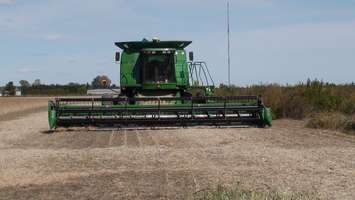Canada's top financier to the agriculture industry is reporting that the average value of Canadian farmland jumped by 11.5 per cent last year.
Farm Credit Canada (FCC) said the increase, however, is slightly less than the 12.8 per cent rise reported in 2022, but ahead of the 8.3 per cent increase in 2021, adding this year’s increase is the second highest since 2014.
In Ontario, the average price of farmland increased by 10.7 per cent in 2023 after increases of 19.4 per cent in 2022, and 22.2 per cent in 2021.
In Southwestern Ontario, farmland sold for $23,100 an acre on average last year, a 13.3 per cent jump, while in Midwestern Ontario, farmland went for $19,200 per acre on average, an 8.5 per cent hike.
Land value increases occurred amidst higher interest rates and strong farm income, while demand for farmland remained robust and the supply of farmland available for sale continued to be limited, according to FCC.
“Farmland prices have continued to increase at a rapid pace over the last couple of years, even when economic conditions suggested the growth should slow,” said FCC’s chief economist J.P. Gervais. “A limited supply of available farmland combined with a robust demand from farm operations is driving that growth.”
The highest average provincial increases in farmland values were in Saskatchewan, Quebec, Manitoba and Ontario, with double-digit average increases of 15.7, 13.3, 11.1 and 10.7 per cent, respectively.
Four provinces had single-digit average increases and were below the national average at 7.8 per cent in Nova Scotia, 7.4 per cent in Prince Edward Island, 6.5 per cent in Alberta, and 5.6 per cent in New Brunswick.
British Columbia recorded an average decline of 3.1 per cent, but it still has the highest farmland values on average.
FCC said farmland value trends couldn't be fully assessed in Newfoundland and Labrador, Northwest Territories, Nunavut, and Yukon because there was an insufficient number of publicly reported sales in those regions.
“The land market has shown to be very resilient. Purchasing land in the year ahead will come with careful consideration of the price and timing,” Gervais said. "Some operations will prefer to wait and see where land values will settle while others may move more quickly should adjacent land become available, or simply because it fits their strategic business plans.”
FCC cited the number of farmland transactions in 2023 is estimated to have declined slightly relative to 2022 as farm operations exercised more caution toward investment decisions.
“The expectation of weaker farm revenues and elevated borrowing costs and input prices are expected to stretch out this cautious environment for farmland transactions into 2024,” according to Gervais.
Gervais acknowledged that lower affordability of farmland is challenging for young producers, new entrants, and those aspiring to grow their land base and that can expose some operations to more risk as they navigate higher rental rates and input costs.
“The good news is that farmland value increases reflect a positive outlook for the demand of agriculture commodities and the quality food we produce in Canada,” Gervais noted. “Producers have a long track record of making strategic investments in land. These long-term investments in food production have spurred growth and create a bright future for Canada’s agriculture and food industry.”
Click here to read the full report.






